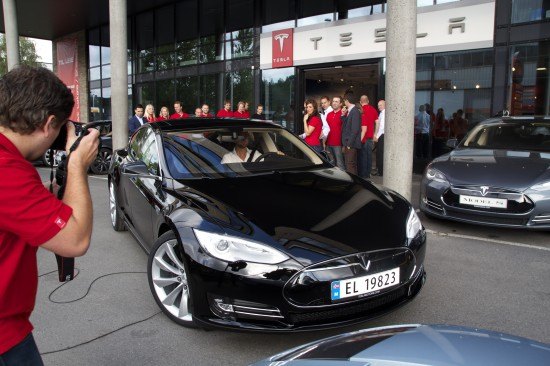Norway Set To Review EV Incentives Amid Soaring Sales
The law of unintended consequences has found another victim in Norway as the nation re-assesses its electric vehicle incentives amid soaring sales.
Monday marked the 50,000th EV sold in Norway since the nation implemented incentives in 2012 meant to encourage electric-vehicle adoption among its citizens. The incentive includes toll and parking fee exemptions, free use of charging stations, and bus-lane usage in addition to the usual tax credit scheme, Reuters reports. The milestone arrived three years earlier than expected by the government, whose official data shows that one-fifth of 2015 new-car sales in Norway are of electric models. Norway, a nation of 5.1 million, now accounts for one-third of all battery-powered vehicle sales in Europe based on 2014 sales figures.
As such, the nation’s finance ministry is looking to revise those incentives, especially in light of losing kr3 billion to kr4 billion ($380 million to $510 million USD) in revenue, as well as complaints about increased sales of the Tesla Model S, which made up 3 percent of overall EV sales last year. The latter issue has led to calls from critics to remove the incentives for wealthy consumers.
The finance ministry will present the outcome of its review when the revised budget is presented May 1.
Seattle-based writer, blogger, and photographer for many a publication. Born in Louisville. Raised in Kansas. Where I lay my head is home.
More by Cameron Aubernon


































Comments
Join the conversation
The big jump in sales is due to the fear that the government gravy train will end, because incentives were only supposed to be for the first 50,000 EV sales. I've just had a paper published that examined the cost effectiveness of Norwegian EV subsidies, and Tesla buyers are getting the equivalent of almost $50,000 discounts from just the break of new car taxes, so they make up about 30% of new EV sales (not 3% as the article states). When compared to the lost tax revenue, the value of the emission reductions results in a government ROI of approximately -70 to -90% depending on what assumptions are made regarding the value and use of free parking, free electricity, free road tolls, etc. The funny thing is that socialist Norway is giving its richest citizens free money so they can feel green, but it will be interesting to see what sales do if incentives are dropped. I predict a major crash, particularly for the Tesla which is not the type of car that Norwegians would usually buy (much too large for typical parking spaces, and not a station wagon/CUV).
On the surface Norway in 2015 looks like a natural for subsidizing EV's even with today's $60 oil. Norway represents an extreme situation. Still the devil is in the details, so when oil falls from $110 to $60 a review seems called for. The obvious lesson is that the recent decline in oil prices is not a good omen for EV subsidies anywhere. In Norway, the key is the marginal revenue available from Norwegian electricity sales (generated from hydro) at 4am in the morning. With modern time-of-day metering Norway may be looking at almost free fuel for EV's. So, oil export prices fall by 40% - no biggie.
It's the same effect we saw with the Prius in California 10 yrs ago. The lanes become clogged and then the people who the lane was originally set out for become clogged. Despite this, Norwegians are beginning to understand what has gone wrong because the Mercedes C and the Ford Mondeo have been major successes in recent moment and the Tesla has all but faded. The bus company wants the benefits scrapped. Many electric cars were bought as a daily driver as opposed to the main/family vehicle and replaced Fiestas, Fits, Corsas, Polos, Clios and Yarises (anything is better than a Yaris tho)
Figure than for every EV sold, Norway is able to export a little more oil, even if some of the oil savings comes from reduced mass transit, which is less saved of course. So if every EV gains a bit of oil revenue for Norway. It would at least offset some of the loss from incentive.